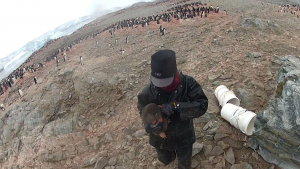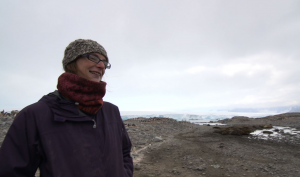Antarctica is filled with different types of life forms. Collectively, these life forms play an important role for scientists on the continent. From the steady shift of phytoplankton from the northern part of Antarctica to the southern part, to the rapid decrease of krill in the cold depths of the Antarctic Oceans, to the changes of the feeding habits of the Adelie penguins, each life form story is a pixel to the bigger picture that’s shaping Antarctic landscape. These small changes that the different life forms experience serve as early warning detections for scientists that larger changes are on the horizon. For scientists like Jen, it is their job to detect the many warnings given by animals of the changes occurring.
For me, it is interesting how Penguins can give early warning to the scientists about the rapid changes in the climate. Working on this scene has taught me how big and complex this continent is and how wildlife is varied across the landscape. For instance, Adelies can be found in different stages of success or decline depending on their region. My perception of scientists really changed by working on this story. Previously, I assumed these scientists would be collecting data from the safety of the ship – or if they did venture off the ship, it would be for a couple of hours. But Jen and Cameron showed me a more adventurous and dangerous side to scientific research. They lived alone on Avian for 5 days without any support or safety in the vicinity. They had to do this to collect data of all the birds that exist on this remote island rarely visited by humans. I personally would not want to do the work they do – I think it would frightening especially at night to be surrounded by elephant seals on a completely wild island in the middle of nowhere.
In conclusion, my perception of scientists had changed. When I use to think about scientists I imagined someone in a lab with a white coat on and test tubes. I now realize that there is a more adventurous and dangerous side to scientific research.





 Follow the
Follow the  Subscribe to the blog RSS feed
Subscribe to the blog RSS feed